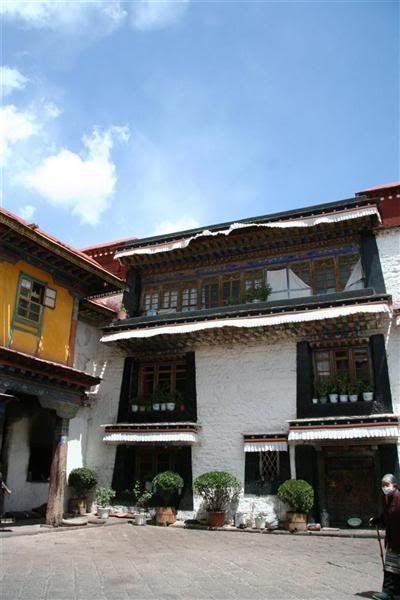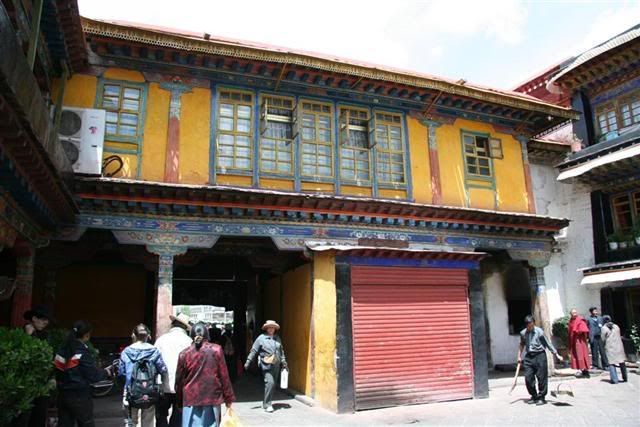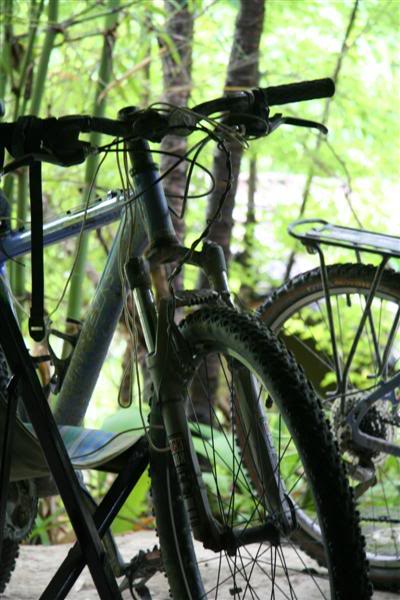Tashi delay :-)
The Johkang temple on approach is an unimposing building and little is given away to the splendour that awaits inside. As a monastery to all branches of Tibetan Buddhism it is an important place for many people. As K and I walked into the forecourt we had to pick our way through prostrating pilgrims so as to not tread on a limb or anything worse. 
Some of the pilgrims knelt on the floor and placed their foreheads to the ground, others, in an act of subduing ego then slid their hands further forward on to the flagstone thus bringing the whole of the front of their body to the ground face downwards. Then after standing up and raising their hands above their head, this process was repeated again and again and... again. 
Some of the pilgrims had a cushion to soften the contact with the stone slabs, they also used wooden blocks or plastic from old bottles etc. to protect their hands as they slid them along the floor, many had their knees bound too. With a thermos flask and some snacks by their sides they were prepared and nourished for the task. The flagstones were polished and indented from all of the prostrating pilgrims over the years, for many of the visitors this is a lifetime ambition fulfilled.
As we walked through the entrance we encountered the usual fierce looking Lokapalas (or guardians fo the four cardinal points), these particular ones were not crushing demons :-). We made our way passed them having nothing to fear and walked into the bright courtyard. Upon the roofs encircling the courtyard stood many tourists holding cameras and wearing brimmed hats (in my mind they looked like paper garland dolls) and as my eyes came into focus adjusting to the light everybody else merged into the background as I looked at the bright colours of the buildings around me with the sun shining off of them.


We purchased our CD rom ticket (how impressive :-) from a monk and we then ascended the stairs that took us onto the roofs to join everybody else. As we walked around the courtyard and looked out towards the Barkhor area we took in some amazing views of Lhasa. We could see the pilgrims, monks and tourists circumambulating the Johkang Kora (a holy walk) which was also lined with stalls selling religious souvenirs.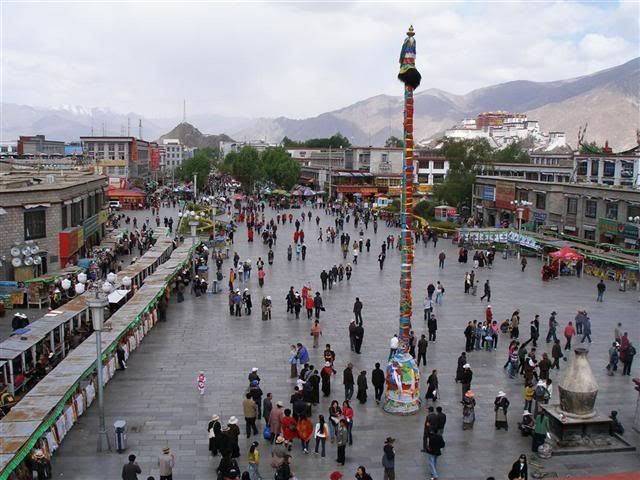
We could see the Potala palace and the surrounding mountains, as well as nearby rooftops decorated with Tibetan prayer flags and Yak fur. 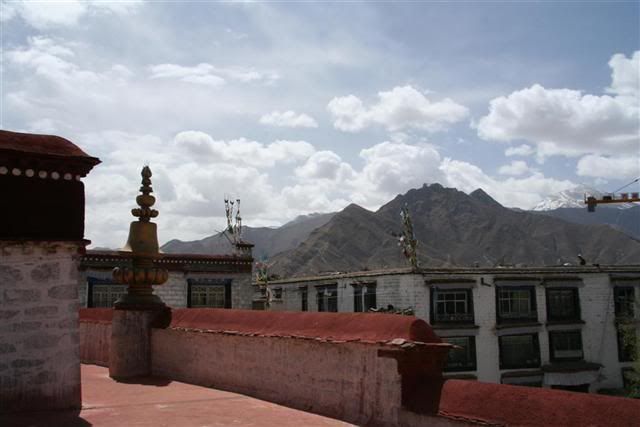
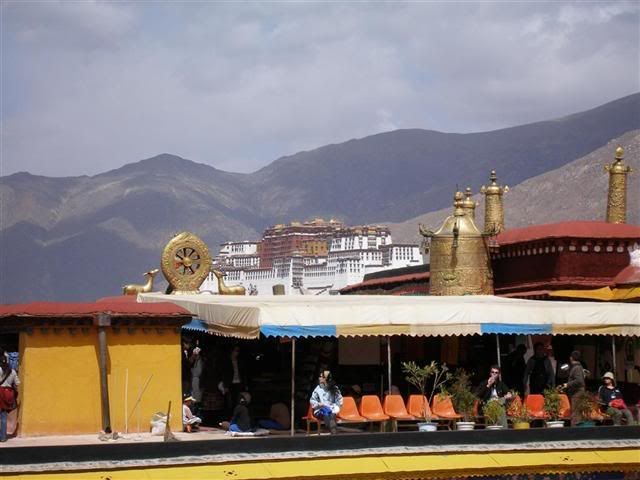
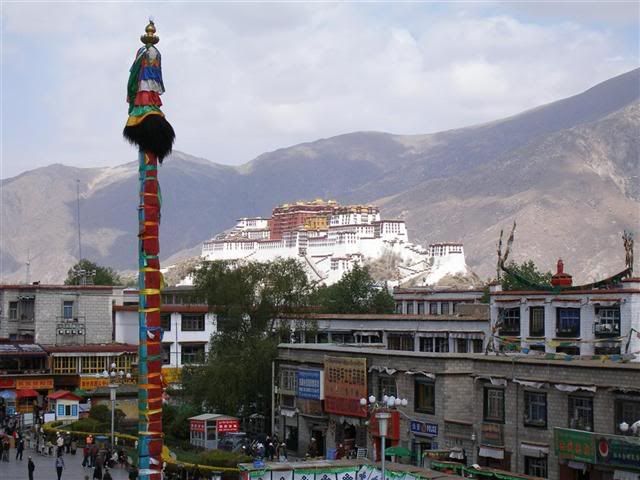
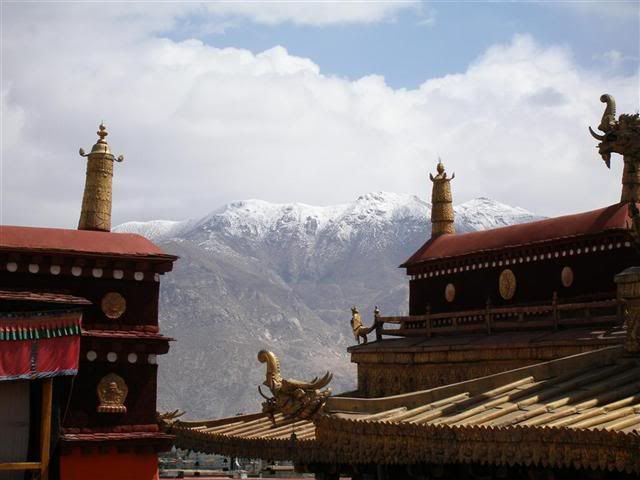

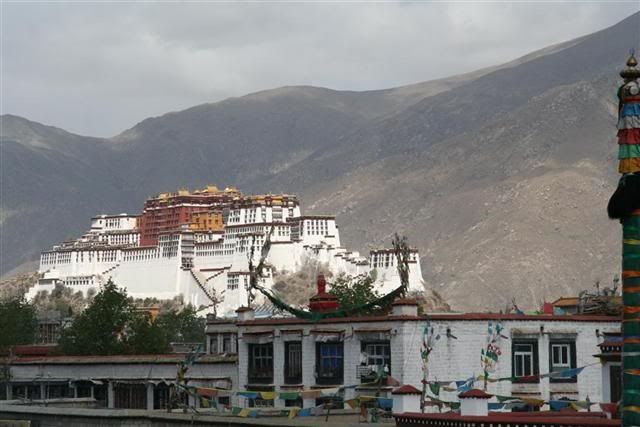
There was a gilded Chakra wheel and deer statues upon the rooftop and they shone golden in the sun. 
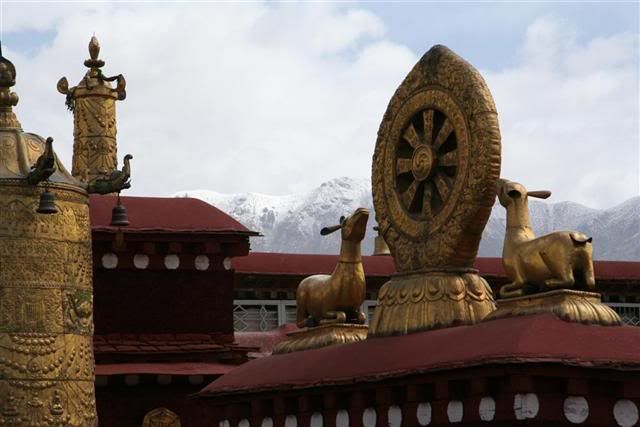
There were some workers who were repairing the floor, as they flattened the freshly laid cement by patting it with the end of a long pole, they would sing together, the singing was harmonious and beautiful, it sounded tribal. 
We explored the second floor area for some time. We walked along narrow corridors also open to the sun and we looked down upon the row of prayer wheels encirling the main temple. 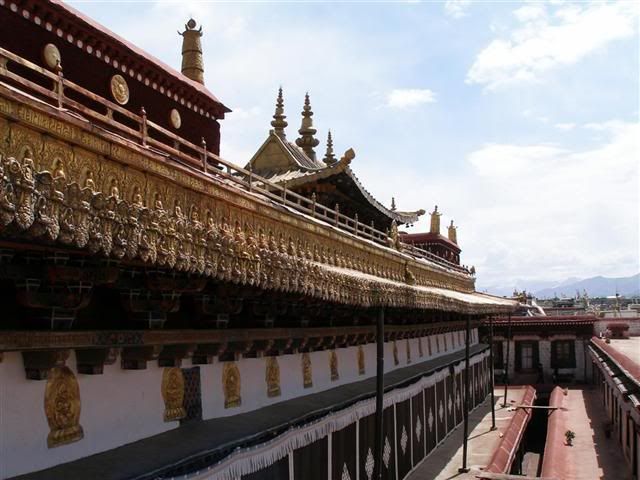

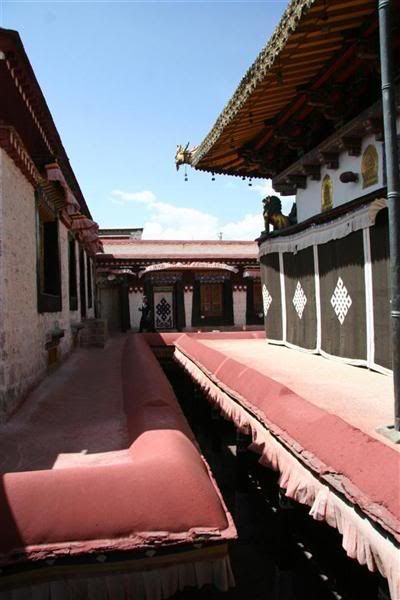
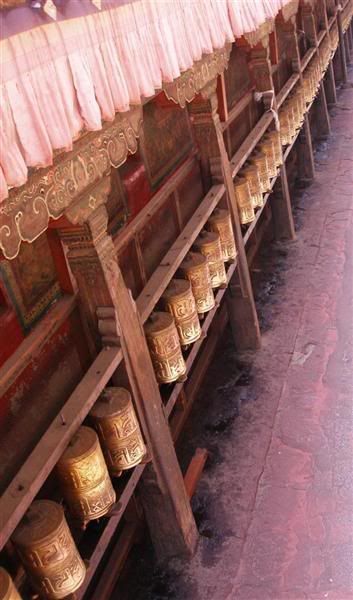
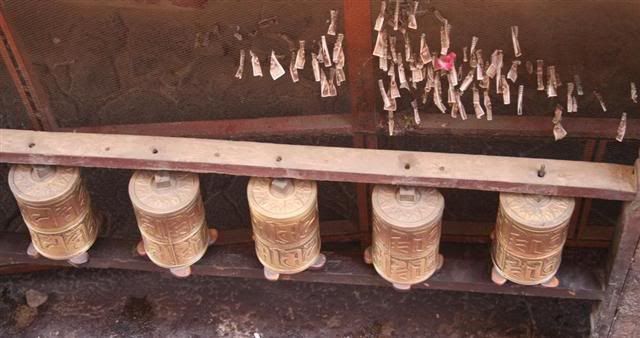
We came across residential areas as well as many other courtyards. 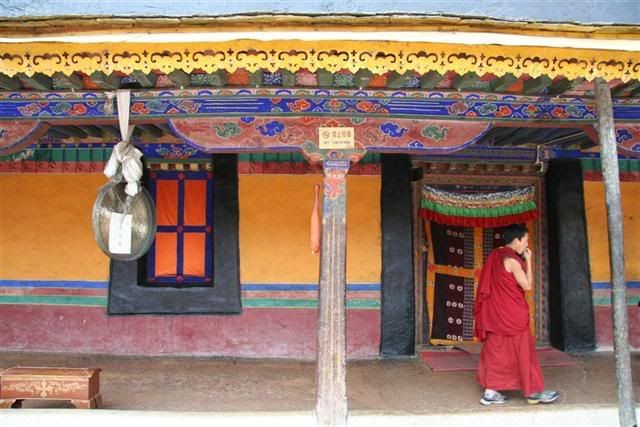
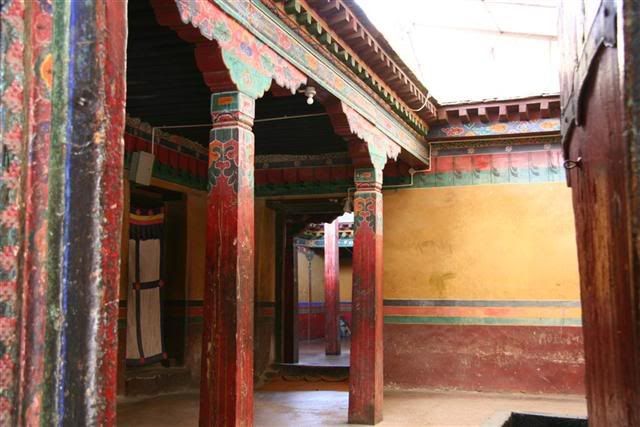
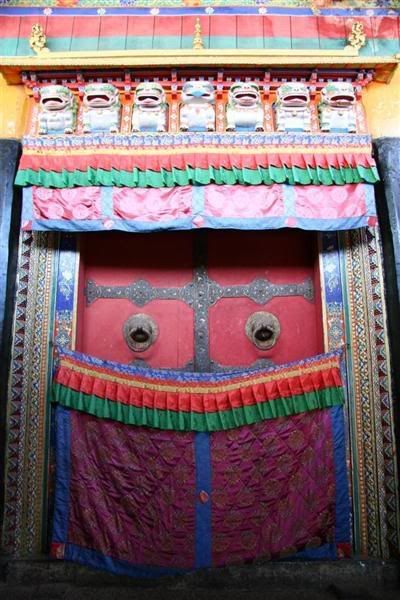
The walls and roofs were painted elaborately with symbols of the Buddhist faith, doorways were covered (in the traditional Tibetan style) with fabric coverings. 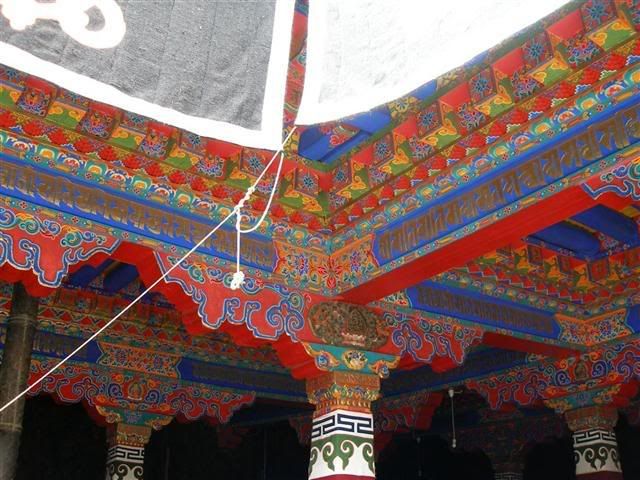
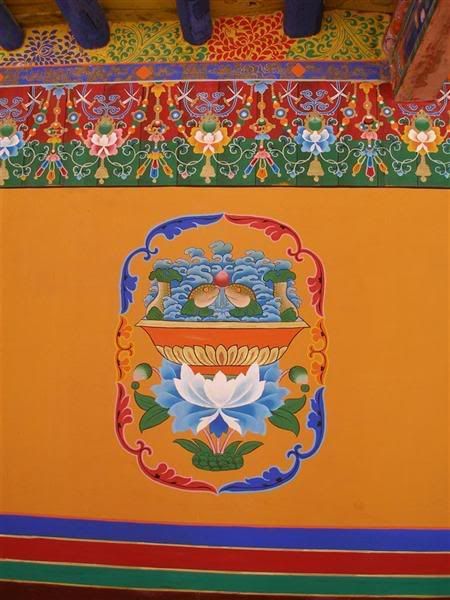

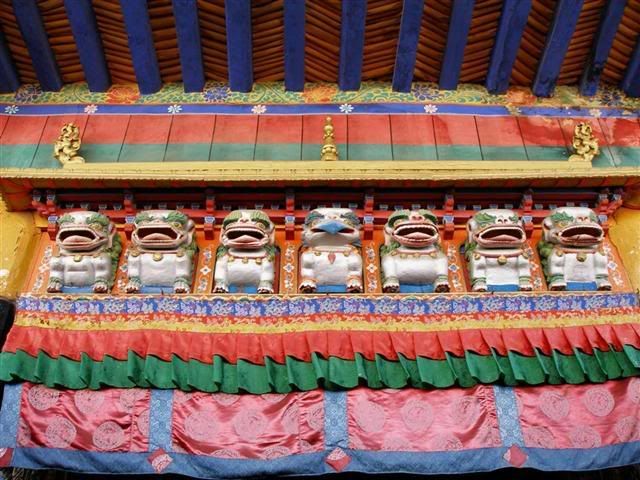
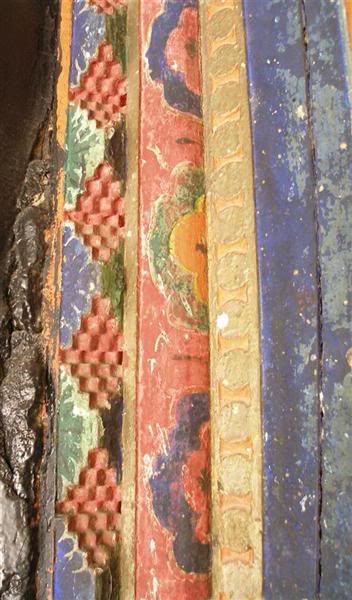
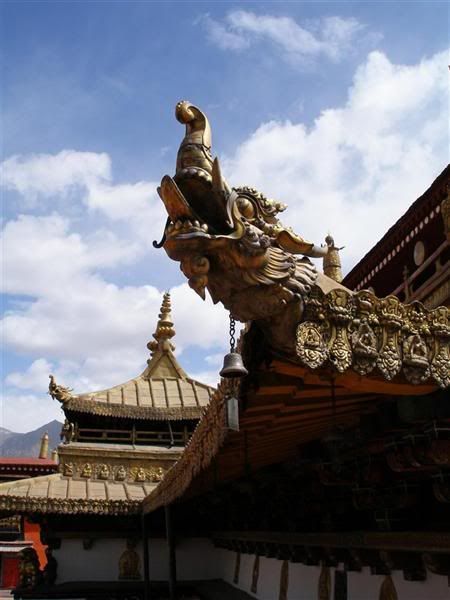
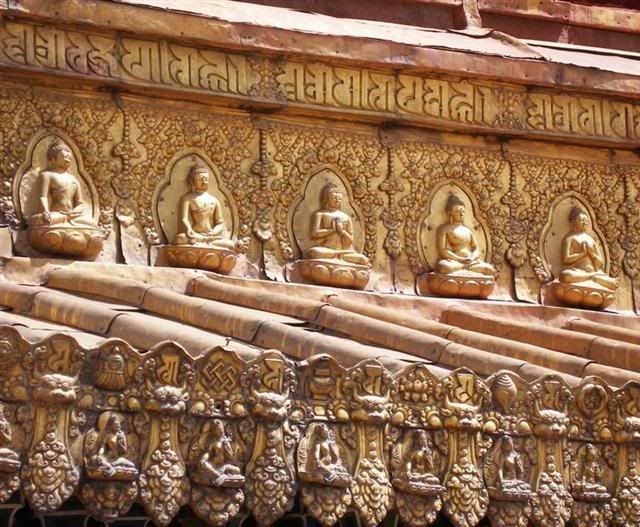
We walked up and down narrow steep staircases and eventually found our way into the main temple.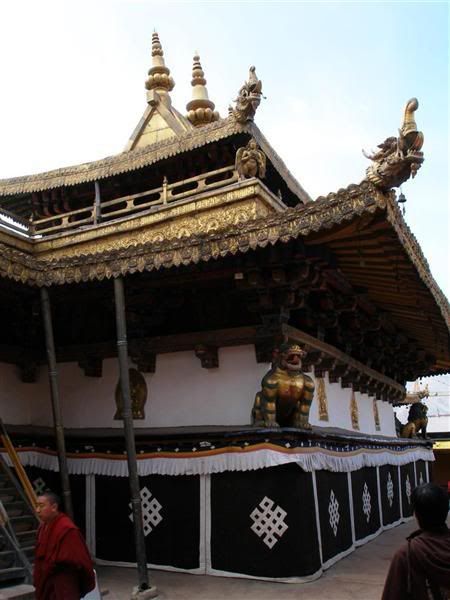
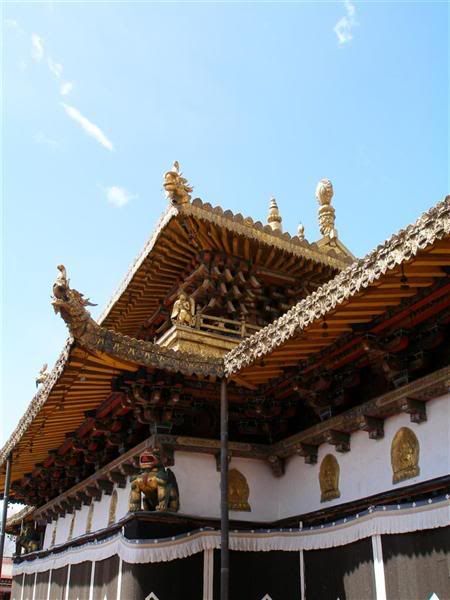
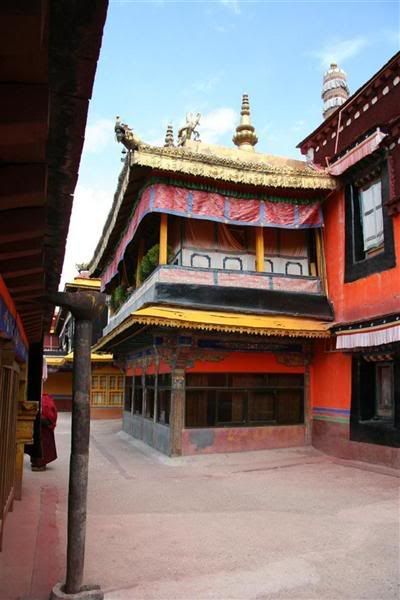
Due to a ban on cameras we were unable to take photos inside the main temple, hopefully I can give you some idea of what it was like... :-)
Neither K and I were prepared for what awaited us as we walked into the main temple...
In the dimness (a stark contrast to the sunlit courtyards) we were surrounded by pilgrims who were wide eyed - we probably mirrored the same expression of wonder on our faces. Most of the light in the temple was provided by rows of yak butter lamps and it took some time to adjust to the darkness and to then get our bearings. In front of us was the prayer hall enclosed by low railings. Within this area there were rows of cushions and low wooden tables ready for the burgandy robed monks who would later be chanting their mantras here. Looking around I saw large statues of Chenresig (the Tibetan name for the Bodhisattva Kuan Yin), Jampa Buddha (Maritreya - Buddha of the future) and Sakyamuni, they dominated the view although after looking closely I noticed the thangkas and some fabric decorations hanging from the walls.
Pilgrims were moving swiftly to our left, mumbling mantras as they made their way clockwise around all of the chapels that encircled the main prayer hall. Chapels such as the Chapel of Maritreya, Manjushri, Guru Rinpche - there are many to name. Inside the chapels stood (behind glass cabinets) gilded figures of Buddhas and bodhisattvas, the room no more than 16 metres square was a tight squeeze especially with the placing of a butter lamp stand in the centre. Pilgrims would enter through the small opening to the chapel and would walk clockwise whilst chanting. They carried Jiao notes with them (there are 10 Jiaos to a Yuan) and would make an offering by placing the money inside the cabinet through any gap that they could find. They would then exit and move onto the next chapel.
The most revered statue in the whole of Tibet is the Jowo Sakyamuni which depicts Sakyamuni at the age of 12, it has been in Tibet since the mid 7th century and it has it's own chapel in the Johkang. We had to queue to get inside the chapel and there was some pushing from behind me as people excitedly tried to get a viewing. K and I could not help but get caught up in the religious fervour, our lips were silent but if we had known of any mantras ourselves I am sure that we would have joined in with the chanting. As it was we joined the pilgrims (walking upon the sticky and slippery floor covered in Yak butter from the dripping lamps :-) and ensured that we visited each chapel. Some of the pilgrims would say "Tashi delay" or would nod to acknowledge our presence, taking a momentary break from their prayers.
We also went up to the second floor and visited the chapels there, just managing to get a look in before the area closed for the day, the monks were already scraping the lamps clear of solidified yak butter and sweeping debris on the floors. They were also gathering up the bundles of currency that had been left as offerings in the temple, it was amazing to see how much money had accumalated in a morning. The smell of the yak butter and incense, the sound of the pilgrims and the bright statues in the flickering flames added to the atmosphere of mysticism. The Johkang was an amazing experience, despite the fact that many of the statues were new (there had been much damage to the Jokhang during the Cultural Revolution) we both felt as though it was a timeless experience and we plan to go and visit again before we leave Lhasa proper :-)
Exeunt... :-) :-)